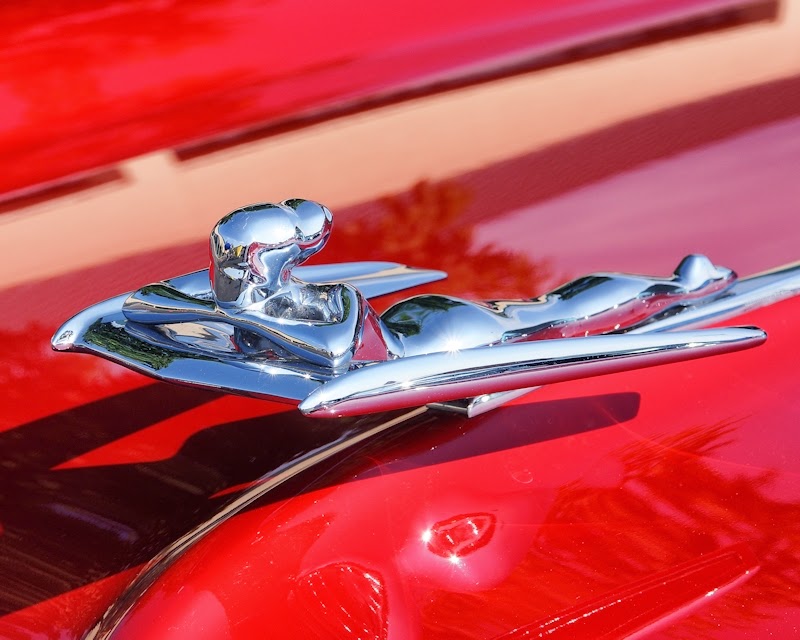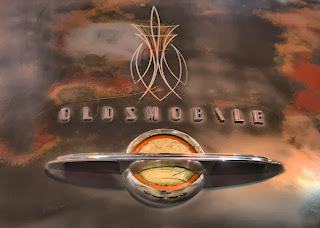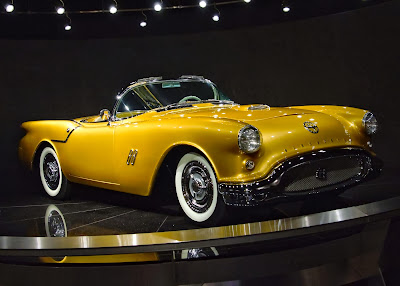 |
| Oldsmobile F-88 Concept Car |
 |
| Part of the Gateway Automobile Museum |
I've driven thousands of miles on two lane roads throughout America. To pick a favorite is impossible, but one of my favorite drives is very remote, spectacularly beautiful, and is anchored by the Gateway Automobile Museum at one end and Moab, Utah and Arches National Park at the other.
Gateway is a remote small town set in a beautiful red rock valley. It is best reached from Grand Junction by driving south on highway 50 until you see a sign for Whitewater to the right on highway 141.
The road takes you through beautiful ranch land framed by towering mountain peaks. As you get close to Gateway, the alpine landscape transforms into red rock country that recalls virtually every western movie you've ever watched.
The tiny town of Gateway straddles the highway and within a few moments, you will see Gateway Canyon Resort as you drive south.
The resort is a world class end destination resort with every amenity and a number of ways to explore the area, from horseback, mountain bike and by Jeep or exotic sports car. They can sign you up to learn to get big air a Pro- Baja dirt trophy racing truck on the private off road course.
 |
Hanging Flume
|
At this point, a lunch stop and museum tour could easily turn into a weeks stay.
This is one of the most spectacular and well displayed automobile museums that I have ever visited. It essentially tells the story of the American Automobile over a period of 100 years for 1906 to 2006.
This collection has many interesting and unusual cars. Many prototype and concept cars are featured including the centerpiece of the collection, the 1954 Oldsmobile F-88 concept car.
If you are a photographer, you will be hard pressed to find any museum that stages and lights the cars so beautifully. Rather than the velvet ropes that usually hang right in the way of a good photograph, low black pipes keep visitors from bumping against the cars, and allow you to photograph over them. I found that a few test shots and some white balance adjustment was all I needed to get the colors correct. Many of the cars have a full satin black background so you can get clear unobstructed photographs. Treat yourself to a night at the Gateway resort, enjoy a relaxing meal before departing to Moab the next morning. Gateway canyon and the museum should be added to any car guys bucket list.
Departing Gateway, make sure you have extra camera batteries charged and an empty memory disk, this day will be filled with spectacular images.
Highway 141 is one of Colorado's most beautiful drives. The dilemma is, do I surrender to the wonderful driving experience, or stop every quarter mile or so to take photographs. This wonderful drive follows the river at the base of towering red rock walls and then climbs to the top of the mesa.
As you are climbing to the top, be sure to stop at the overlook for the hanging flume. This flume was a ten mile long way to get water to a gold placer operation. The builders had to hang hundreds of feet above the water attaching the flume to the sheer rock cliff face.

Eventually you will come to highway 90 heading west toward Moab. You drop into Paradox valley with a single town of the same name. Now comes a steep climb up a series of switchbacks that bring you along the backside of the beautiful La Sal mountains. At this point you will come to highway 191, the main road into Moab.
Moab has become a very popular vacation spot. It's so popular that I try to make my visits in the late fall or early spring. Any time of year it is important to have a lodging reservation well ahead of time.
 |
| La Sal Mountains |

Moab has many hotels and motels all along the main street, but my favorite is to take highway 128 out of town about 15 miles to the Red Cliff Lodge. It sits right on the Colorado River and features 360 degrees of spectacular views. The rancher that originally ranched here was responsible for getting Hollywood to film westerns in this area. John Wayne and virtually every other western actor from that era stayed at the ranch. The ranch is now a great lodge with it's own vineyard, great restaurant and is a great base from which to explore the area.
 |
| Pierce Woody Station Wagon |
There's is no way to really capture the beauty and scale of Arches National park in a photograph, and there are endless trails and canyons to explore on foot, horseback or with a 4x4 .
This is the end of the drive, but the start of as much adventure and exploring as you have time for. The spring season has two automotive events, the Easter Jeep Safari and in late April, the Moab car show. Either one literally takes over the town, so plan well in advance.
I hope this trip is one you will add to your must drive list.
Michael
StillsLife - Classic Automotive Photography
www.stillslife.net


































